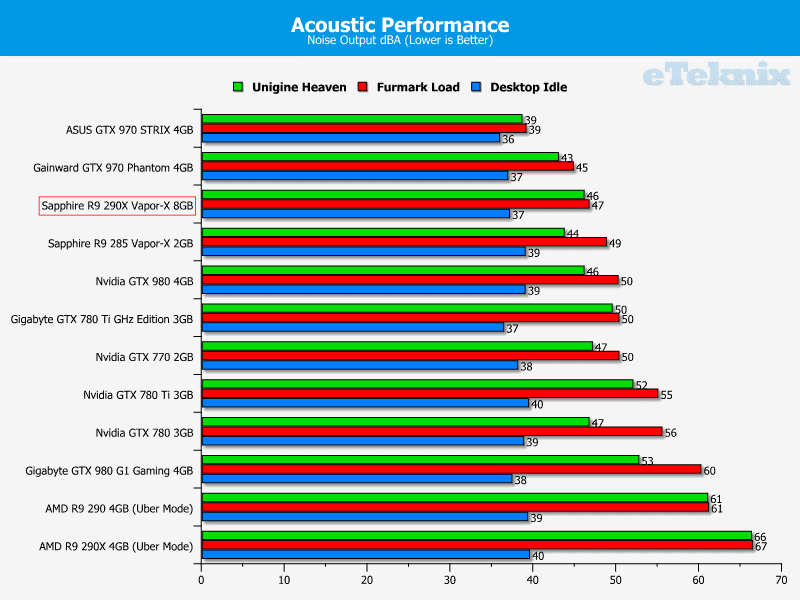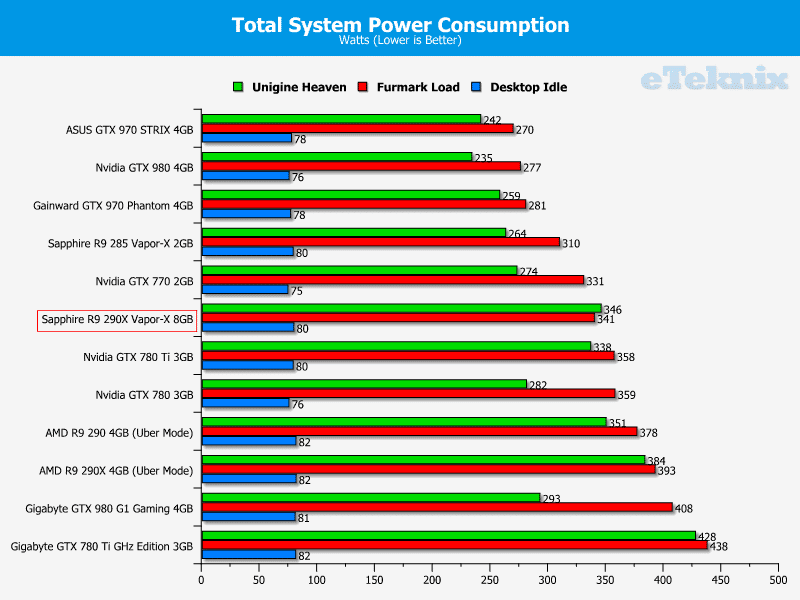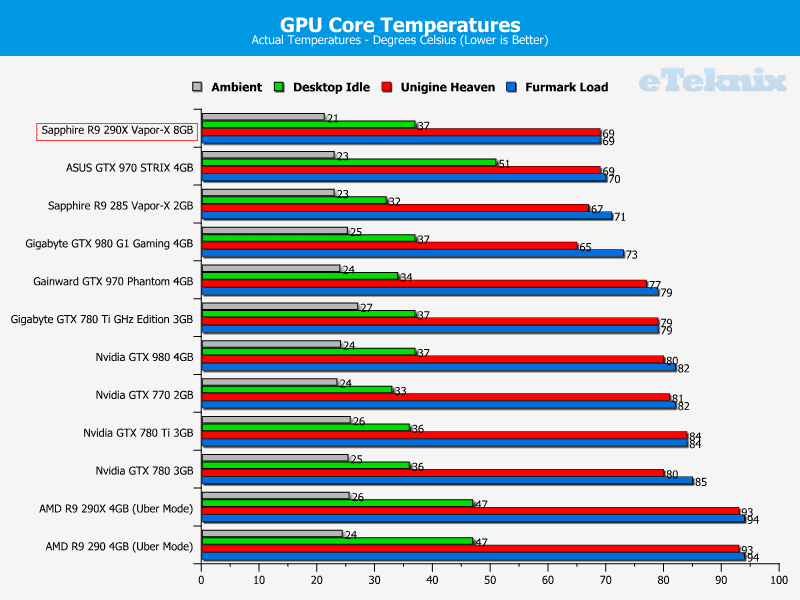Sapphire Radeon R9 290X Vapor-X OC 8GB Review
Ryan Martin / 10 years ago
Noise, Power Consumption and Temperatures
Noise
The noise levels produced by a graphics card is an increasingly important consideration for PC users and Gamers these days. While fan noise is unlikely to ruin the gaming experience, no one likes a noisy graphics card and no one will argue with the fact that quieter is better. Many users are willing to sacrifice temperatures to gain a silence advantage, but with better cooling solutions being developed it is increasingly common to be able to get both better cooling and better acoustic performance than a reference solution on most custom cooled graphics cards from Nvidia and AMD partners. That said both AMD and Nvidia have stepped up their game too with regards to acoustics on their reference coolers. Ultimately, acoustics will always be a big deciding factor when there is often very little differentiation between graphics cards using the same GPUs. To acquire the noise levels of graphics cards in our benchmarks we run three different load scenarios for 5 minutes and take an acoustic reading using our decibel meter at the end of those load scenarios. The measurement is taken approximately 30cm horizontally away from the graphics card and the CPU fan is disabled and other background noise minimised to reduce interference. The three load scenarios are desktop idle, Furmark load and Unigine Heaven load. The reading in Unigine Heaven is always taken in the first scene of the sequence after one loop is completed.

Simply superb is the only way I can describe the acoustic performance of the Sapphire R9 290X Vapor-X graphics card. It is only beaten by a couple of GTX 970s which have TDPs that are nearly half that of an overclocked R9 290X.
Power Consumption
With electricity becoming increasingly expensive across most parts of the world the need for computer components to become power efficient has never been more relevant. Graphics cards are often the most power hungry components inside a desktop system so having an efficient graphics card is very important to keeping power bills under control. Power is often correlated to heat and so lower power consumption means a graphics card is likely to run slightly cooler and put out less heat into your system meaning your other components will run cooler with improved longevity. AMD and Nvidia have both made power consumption an integral part of the way graphics cards dynamically overclock so the need for graphics card vendors to use efficient VRM and PCB designs is becoming important to maximise performance. We take power readings after 5 minutes of three different load scenarios: desktop idle, Furmark load and Unigine Heaven load.

Power consumption….lower than the reference model!? Hmm, strange. My only explanation is that a combination of more efficient VRMs with lower operating temperatures has led to greater efficiency over the reference solutions.
Temperatures
The cooling solution which graphics card vendors choose to implement is one of the main differences that consumers have to contend with when choosing a graphics cards. Apart from their acoustic properties, the thermal properties of graphics card coolers are extremely important. Lower temperatures are always better and with AMD and Nvidia opting to use dynamic overclocking algorithms that take temperature into account it is important that graphics card vendors use high performance cooling solutions in order to maximise performance. The era of graphics cards reaching dangerous temperatures are now in the past but the importance of lower temperatures still remains. Lower temperatures mean better stability, longer component longevity and lower fan speeds .We take temperature readings after 5 minutes of three different load scenarios: desktop idle, Furmark load and Unigine Heaven load. We always record actual temperatures and make a note of the ambient. In the case where more than 1 GPU is used an average is created.

The lowest temperatures award goes to…….Sapphire’s R9 290X Vapor-X!! Hang on a minute, this is supposed to be the card that runs at 95 degrees right?



















